With cloudHQ you can set up a real-time backup of all your Google Apps Gmail accounts to Amazon S3 / Glacier or any other storage. Real-time data backup is backup of emails by automatically making a backup copy of every new email that arrives. This means that cloudHQ is essentially capturing every single email and saving them to your backup storage.
Of course, you can back up your organization’s Google Apps Gmail accounts to not only Amazon S3 but also to a Google Drive folder, Dropbox folder, Box, etc.
And to set up real-time backup of Google Apps Gmail accounts you basically need to create backup sync pairs (backup sync pairs are basically definition how to backup certain users):
For example, something like this:
Google Gmail (bob@acme.com) -> Amazon S3/Backup_bucket/bob@acme.com/Gmail Google Gmail (alice@acme.com) -> Amazon S3/Backup_bucket/alice@acme.com/Gmail Google Gmail (tom@acme.com) -> Amazon S3/Backup_bucket/tom@acme.com/Gmail Google Gmail (jen@acme.com) -> Amazon S3/Backup_bucket/jen@acme.com/Gmail ...
Backup of emails will be organized by date:
- <target_folder_for_backup>
- <email of user1>
- Gmail
- <year>
- <month>
- <day>
- <email1 subject>.pdf
- <email2 subject>.pdf
...
- <email of user2>
- Gmail
- <year>
- <month>
- <day>
- <email1 subject>.pdf
- <email1 subject>.pdf
...
Here are the instructions for how to back up and consolidate all your Google Workspace email accounts to your Amazon S3 cloud storage (or other cloud storage):
Amazon S3 preparation
Before you start the cloudHQ wizard to back up your Google Workspace emails, you need first to create an appropriate Amazon S3 bucket, Amazon AWS AIM user, and—if needed—configure Amazon Glacier policies for your backup bucket.
- Create an Amazon S3 bucket to store your Google Workspace Gmail backups.
If you are looking for Amazon S3 encrypted backups then you will need to attach AWS policy which will enforce AWS server-side encryption. The instructions are here: https://support.cloudhq.net/how-to-enforce-aws-server-side-encryption-on-your-amazon-backup-bucket/
- Create an Amazon AWS AIM user to own this backup. Some instructions are here: https://support.cloudhq.net/how-to-create-amazon-iam-user-for-cloudhq-sync-backup-to-amazon-s3/.
- Optionally, you can set up Amazon S3 to Amazon Glacier archiving rules. Some instructions are here: https://support.cloudhq.net/how-to-setup-archive-to-amazon-glacier/.
Google Workspace preparation
- Ensure that you are a Google Workspace super admin. The instructions are here:
https://support.cloudhq.net/cloudhq-access-permission-for-google-apps-admin/. - Ensure that the Google Workspace Administrative API is enabled for your domain. The instructions are here: https://support.cloudhq.net/how-to-check-if-google-apps-administrative-api-is-enabled-for-your-domain/.
Authorize cloudHQ to access your Amazon S3
In order to backup to Amazon S3, cloudHQ needs to be authorized to access the Amazon S3 bucket you’ve chosen for your backup. To do that, you must provide a key ID and the secret access key of an AIM user with full read-write access to your backup bucket. If you don’t know what that is, please check here: https://support.cloudhq.net/how-to-figure-out-your-access-key-id-and-secret-key-in-amazon-s3/.
- Go to https://www.cloudHQ.net/services and click on the “Amazon S3” icon:
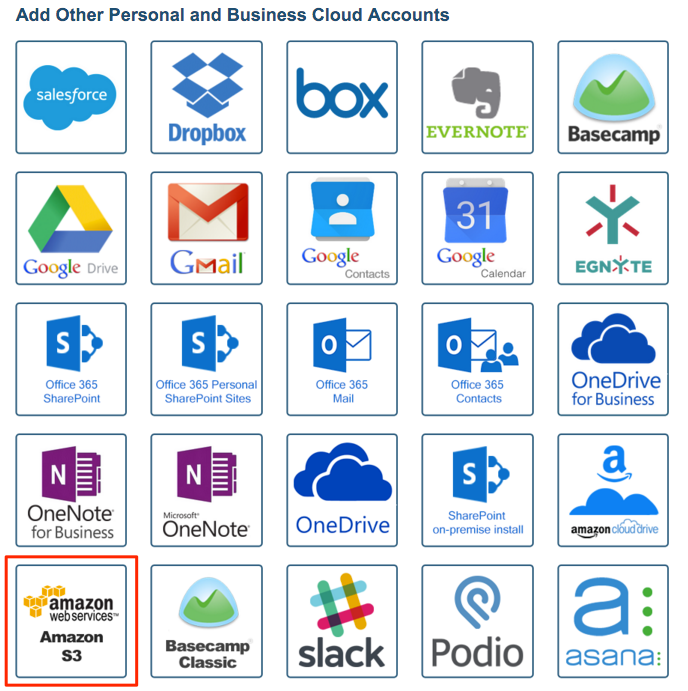
- Authorize your Amazon S3 account:

Authorize cloudHQ to access your Google Workspace domain
- Go to https://www.cloudHQ.net/services and click the “Google Workspace ” icon:
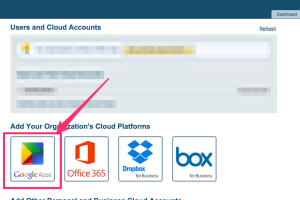
- Enter your Google Workspace super-admin email and follow the wizard steps:
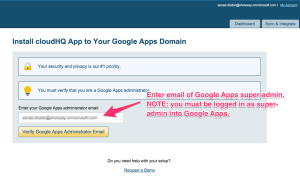
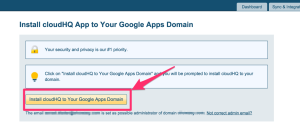

Create backup sync pairs
- Click “Start CloudHQ Setup”:
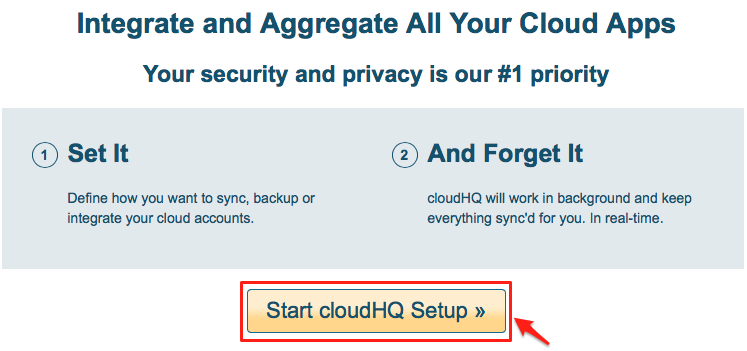
- Select “For IT Admins: Multiple Users Setup” as the type of sync:
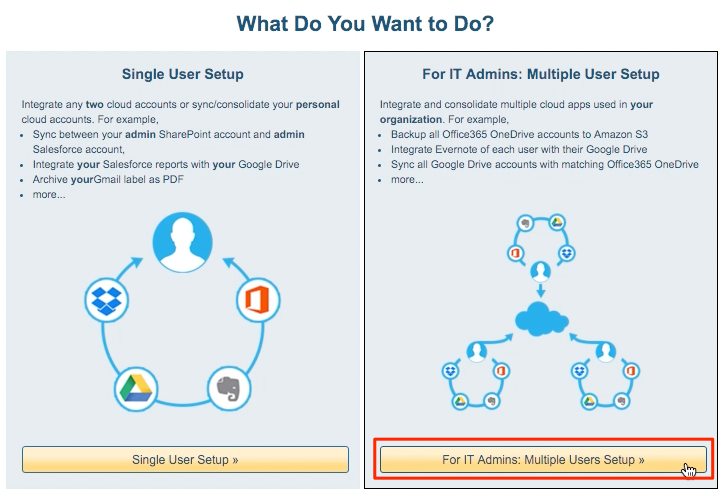
- Select “Google Workspace ” as your organization’s cloud platform:
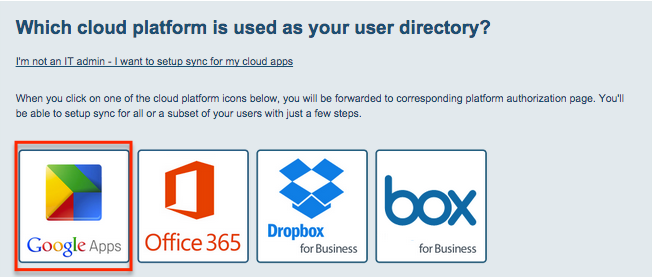
- Click the Gmail icon or drag it to the left empty box:
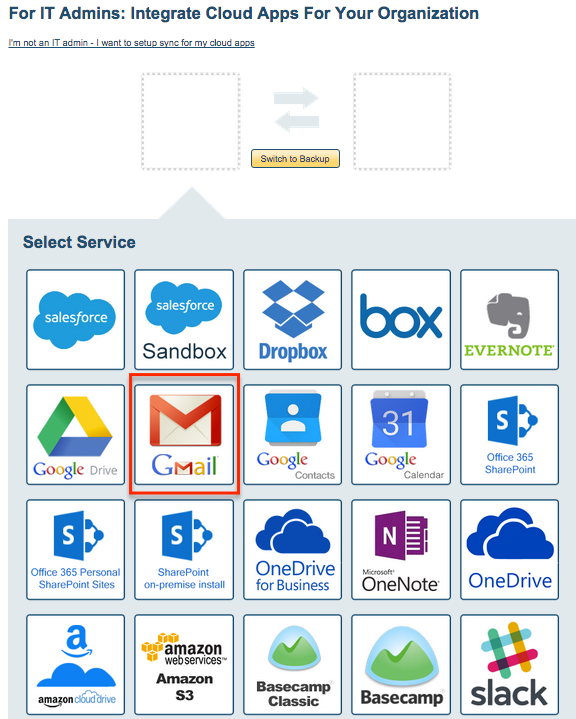
- Select the users whose accounts you want to sync. cloudHQ will get a list of users from Google Workspace and ask you which users you want to sync:

- Click the Amazon S3 icon and drag it to the right empty box:
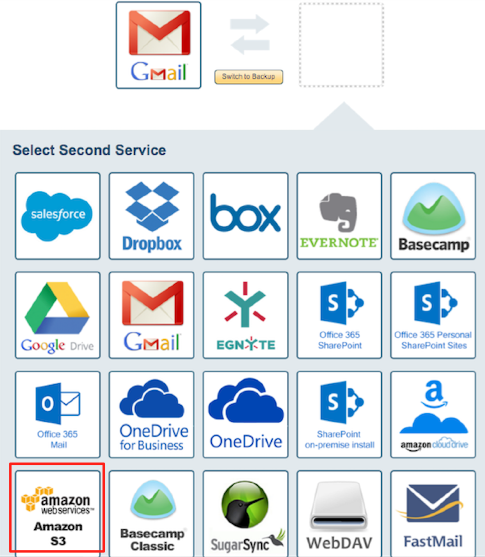
- Please note that the sync will automatically switch to backup:
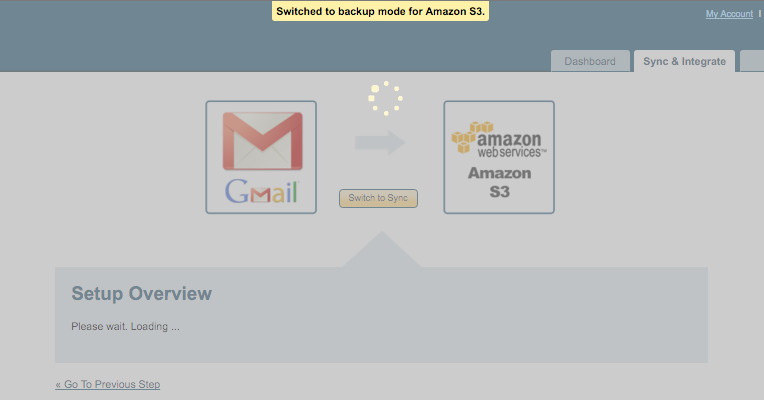
- Click the folder/bucket where you want your backup:
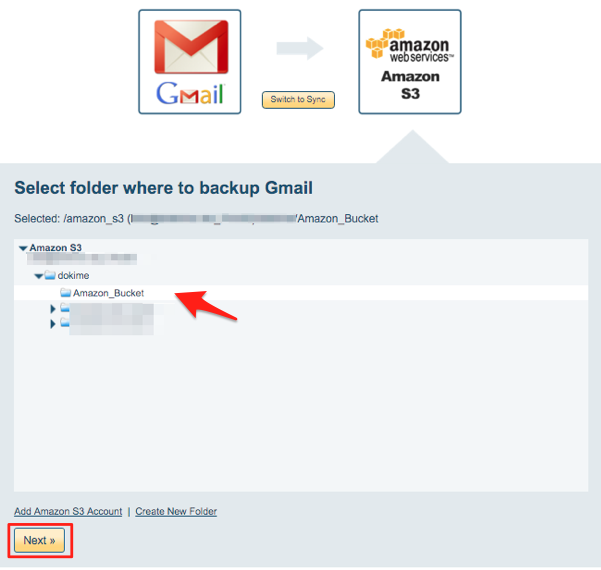
- Click “Finish”:
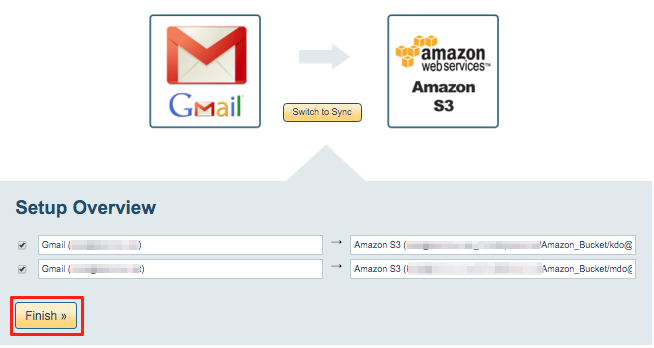
- Configuration will be done by cloudHQ:

- Synchronization pairs will be automatically created by cloudHQ:
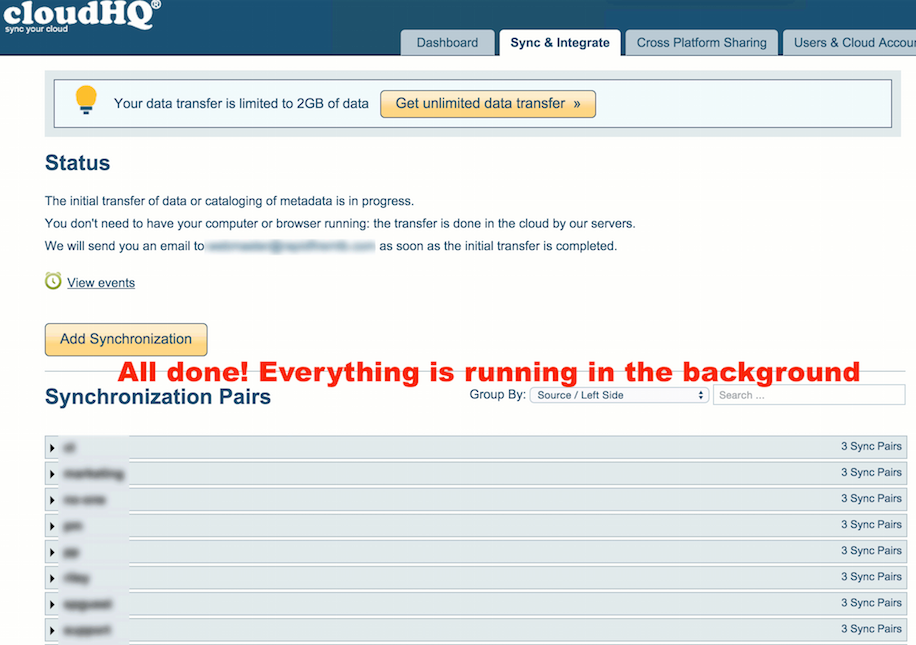
- Synchronization will start. Here is How to Monitor Status of Sync.